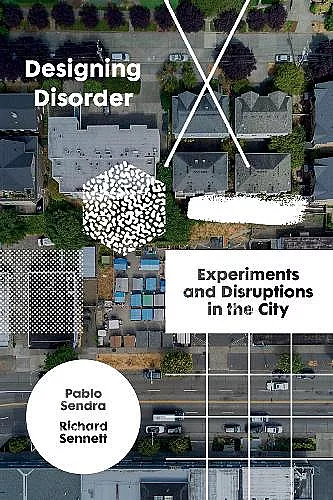Designing Disorder
Experiments and Disruptions in the City
Richard Sennett author Pablo Sendra author
Format:Paperback
Publisher:Verso Books
Published:12th Apr '22
Should be back in stock very soon

A manifesto for the Open City: vibrant, disordered, adaptable.
In 1970, Richard Sennett published the groundbreaking The Uses of Disorder, arguing that the ideal of a planned and ordered city was flawed. Fifty years later, Sennett returns to these still fertile ideas and, alongside campaigner and architect Pablo Sendra, sets out an agenda for the design and ethics of the Open City.
The public spaces of our cities are under siege from planners, privatisation and increased surveillance. Our streets are becoming ever more lifeless and ordered. What is to be done? Can disorder be designed? In this provocative essay Sendra and Sennett propose a reorganisation of how we think and plan the social life of our cities. 'Infrastructures of disorder' combine architecture, politics, urban planning and activism in order to develop places that nurture rather than stifle, bring together rather than divide up, remain open to change rather than closed off.
In this very readable essay, Sennett pushes on the ideas he developed in his 'Uses of Disorder'. The upshot seems to be the 'open city'; the antithesis of places like New York's
Hudson Yards; a pre-determined, real-estate driven 'community' that can only degrade over time. Given contingent times, a necessary critical view of the modern urban realm. * RIBA Journal *
The promotion of this sense of impotence, and the resulting inertia, are encouraged by a patronising capitalist "nanny state" on behalf of corporations for whom profits, not people, matter. The only antidote to that inertia is surely to start planning the "disorder" promulgated by Sendra and Sennett. * Morning Star *
Timely and relevant...For both Sennett and Sendra, cities are at their best when they resist homogeneity and promote difference, and when they empower people to actively shape and reshape their built environment and its public uses. -- Eoin Ó Broin * Irish Times *
A bold invitation to take sides ... a city of power (Hudson Yards) versus a city of the people (the Garment District in New York City), before formulating the no less audacious goal of the book: to enable urban spontaneity by means of design -- Plácido González Martínez * Journal of Urban Design *
Evocatively, he paints a picture of brittle cities, which serve closed systems and whose buildings are destroyed rather than adapted as their use changes. -- Charmaine Chan * South China Morning Post *
This book can be seen as an ongoing and open-ended conversation rather than a static presentation of the authors' points of view ... a very lively and engaging read. -- Judith Ryser * Urban Design *
I thought of my home town, Dublin, while reading Pablo Sendra and Richard Sennett's Designing Disorder: Experiments and Disruptions in the City. Here, the authors explore ethical urban design in an age of privatisation, hostile architecture and widespread surveillance. -- Naoise Dolan * Observer, Best Books of 2020 *
A good public space should offer the possibility of surprise. Sennett and Sendra contrast the idea of the "brittle city" or the "closed city" with the idea of the "open city": a place that can change as its residents', visitors', and workers' needs change. A building, street, or neighborhood should always remain "incomplete," so that it can adapt with the times. . . .worth reading as a guide to post-pandemic urban-space management. * City Journal *
ISBN: 9781788737838
Dimensions: 210mm x 140mm x 11mm
Weight: 170g
160 pages